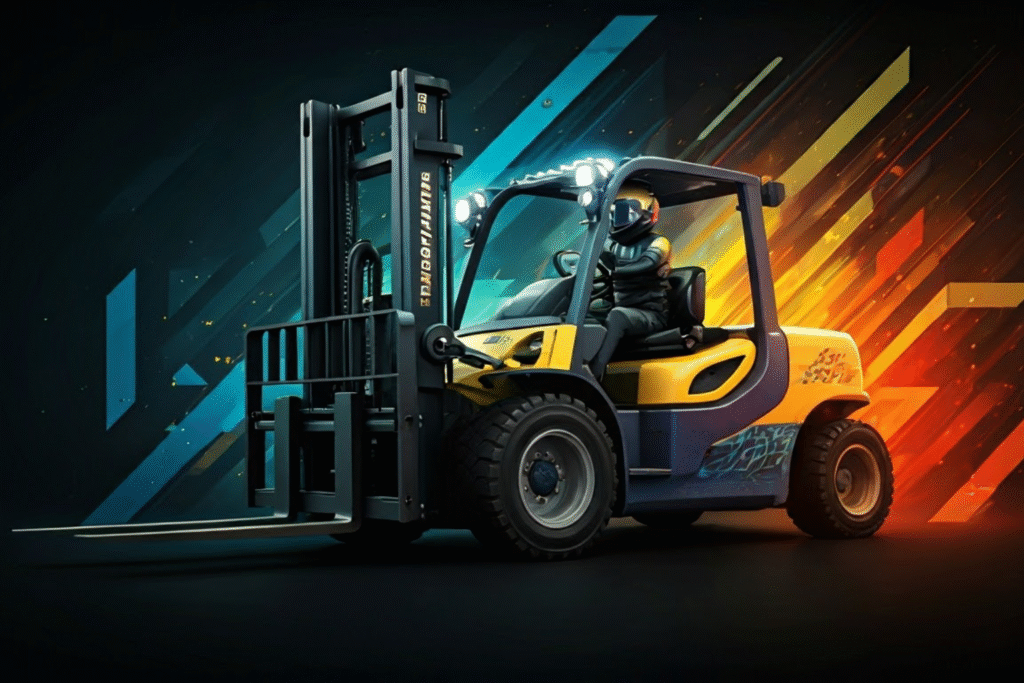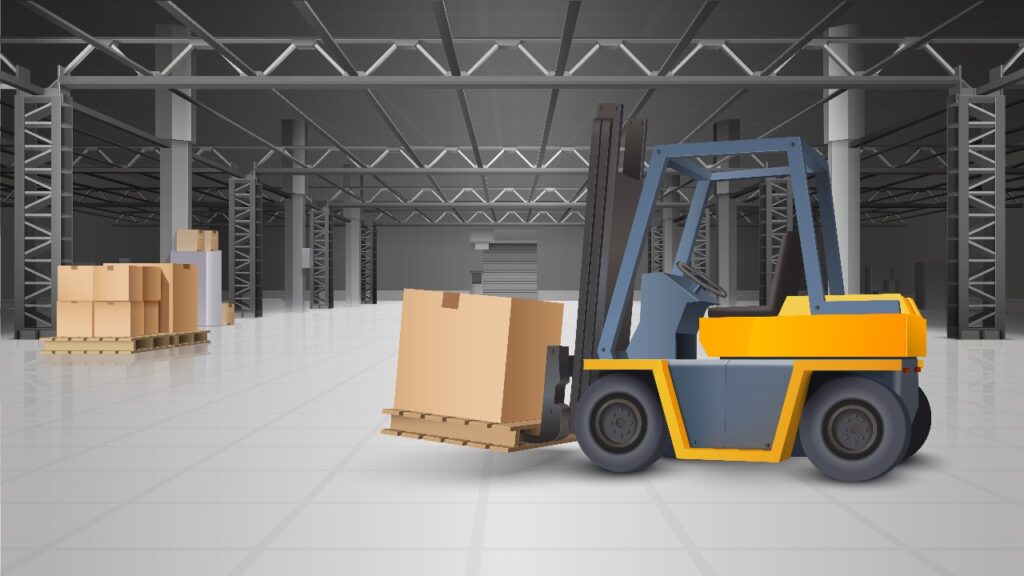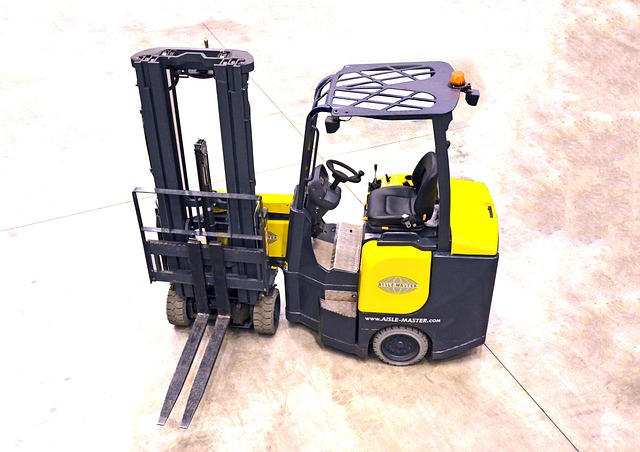Does your forklift battery have the symptoms of poor health? The batteries of forklifts are of great importance to them. They should be kept under proper working conditions through regular inspections and watering to avoid any unpleasant prospects resulting in money loss.
The battery of a forklift is said to need watering when one observes a declined runtime, low power output, terminal visible corrosion, or battery pours exposed. These are just several indications whose seriousness one should not ignore at all.
In this thorough maintenance guide, the 10 most obvious signs will be presented to the reader regarding the watering needed for their forklift battery. Whether you are a warehouse manager or a maintenance technician, knowing those signs can help you:
- Prolong the battery’s life
- Stay prepared for unexpected downtime
- Prevent the need for expensive replacements
- Keep the performance steady
- Guarantee the safety of the workplace
Let us look at the key indicators that demand your attention always to know if the battery of a forklift is in good health and get acquainted with the ways water acts as a preserver of you’re a valuable forklift battery asset.
Key Points:
- Reduced running time and power output, as well as physical change associated with the battery, are the main manifestations of an electrolyte imbalance
- The physical symptoms, such as corrosion on the terminals, and the visual signs, such as the battery plates being exposed, are indicators of immediate watering needs
- The periodical control of the electrolyte level by proper maintenance gives the benefits of preventing cost-effective repairs and increasing the battery’s lifetime
- Supplying a battery with the right quality of water (distilled water, not tap water) plays an important role in the battery’s proper operation
Maintaining proper water levels is critical in the prevention of battery acid spills, which in turn contributes to the safety and security of the workplace.
DANGER: Evaluating 4-7 “Early warning indicators of temperature and charging problems”
Overheating During Charging
If the temperature of your forklift battery becomes abnormally high during the charging process, it can probably be caused by deficits in water levels. In the event of low water levels, indeed, the battery plates are the sources of heat; they operate harder and generate heat in excess of what would be normal, mostly that.
Irregular Charging Patterns
Detect if your battery is not taking the energy it used to or if it loses it too quickly, water levels could be the guilty party. In fact, electrolyte levels that are too low certainly can reduce the battery’s charging capacity significantly, in some cases, even to zero output and become a significant drawback to the lifetime of the product.
Temperature Fluctuations
Notice how the battery reacts to the temperature in which you are working at. Think twice about lengthy exposure to severe and harsh climatic conditions taken by the battery that might lead to performance deterioration. As an illustration, if there is a dearth of water in the battery, it is prone to damage from temperature, thus, it can freeze in cold weather or overheat in hot weather.
Charging Time Changes
The first thing to do is to observe whether any major change has happened to the charging time of your battery. When a battery’s charging process is taking more time than normal, this likely means the battery does not have enough water available. A well-maintained battery is supposed to stick to consistent charging times during all periods of its lifetime.
💡 Key Takeaway: Continuously check the performance of your forklift battery for the following signs: overheating, irregular charging patterns, temperature sensitivity, and prolonged charging times, as these are the red flags that the water level might be low and they require immediate attention.
Warning Signs 8-10: Physical and Chemical Indicators
Visible Corrosion
During the visual inspection of your forklift battery, it is important that you are extra conscious of the signs of corrosion in the area around the battery cell terminals or connections. Some traces of white, green, or blue deposits are conclusive evidence for the occurrence of chemical reactions. These deposits not only serve as a warning of the possible battery acid spill risks but they also imply that the battery’s internal parts might be rusting.
Unusual Odors
An ideal battery operation is odorless. The smell of a battery with rotten egg or sharp, acidic odors is not characteristic and such an occurrence could mean a severe problem. These odors are often the result of chemical reactions inside the battery perhaps due to very charging or internal damage. This smell may also be observed because of the presence of dirty water in the cells.
Physical Damage
Any external damage to the forklift battery will no doubt affect the battery’s performance and safety, sometimes severely. The battery cup, for example, should be checked for any cracks, bulges, or deformations. These physical imperfections can lead to electrolyte leakage as well as affect battery longevity. The battery’s structural integrity will be compromised if cracks are left unattended or are not merely sealed. These cracks, in turn, may be a cause of the uprising of leaks or shorts.
💡 Key Takeaway: Standard examinations for corrosion, unusual smells, and visible damages are what one can’t miss when it comes to maintaining the forklift battery, as it is these precise measures that help us prevent dangerous acid spills, as well as are the only way to being sure of optimal performance in the battery.
Final Speech
Maintaining adequate water levels on your forklift battery is essential for its health and longevity. By heeding the 10 warning signs and performing regular maintenance checks, you can extend the life of your battery and avoid expensive repairs or replacement.
It’s also crucial to replenish your batteries quickly, use the proper water, and do it safely. The first step is to integrate them into your operations.
Regular dilution and addition of distilled water and careful document maintenance may protect your facility from several thousand dollar replacement expenditures. Waiting for multiple warning signals before acting is unwise.
Start the above maintenance methods immediately to protect your forklift battery and investment. Everyone will appreciate proactive battery maintenance, performance management, reduced machine downtime, and a safe workplace.
FAQs
How often should I check the water level in my forklift battery?
Undoubtedly, the forklift battery is the most dependent on water at least once weekly for the best performance. Nevertheless, when the forklift is operating in a very hot environment or subjected to heavy usage, you may find it necessary to check the water level even 2-3 times every week.
Can I use filtered water instead of distilled water for my forklift battery?
However, always use distilled water to refuel your forklift battery. Filtered water, that still contains minerals, can damage the battery cells, and lead to the reduction of the battery life. The minerals in the water can create the internal corrosion, and finally, decrease the performance and overall service life of the battery.
What happens if I overwater my forklift battery?
Overwatering can cause the electrolyte to overflow during charging, leading to the acid spillage and the corrosion. This situation can be the reason for the damage of the battery, the loss of capacity, and the production of safety hazards. Proper watering procedures should always be followed, and the battery should never be filled more than the maximum level indicated.
Should I water my forklift battery before or after charging?
Definitely water your forklift battery after charging, not the other way around. The action of watering first can cause the electrolyte to expand and the overflow during the charging process. Be patient for 20-30 minutes after charging, as the battery needs to cool down before water is added.
How do I know if my forklift battery is beyond repair due to improper watering?
Some indicators such as always showing a low voltage reading, an excessively sulfated battery plate, a badly corroded terminal, and an inability of it to hold a charge suggest that the battery is beyond repair. A unit that demonstrates more than one of the listed issues should be replaced instead of maintained.
What safety equipment should I wear when watering forklift batteries?
Undoubtedly, it is required to wear these safety equipments: Safety goggles, a face mask, and rubber gloves. The mentioned safety equipments will protect you from being exposed to the splashing of corrosive substances while doing the watering procedure. Other accessories that you shall also have are a rubber apron and boots.
Always ensure you use the right PPE which is chemical-resistant gloves, safety goggles, long sleeves, and acid-resistant apron. Keep in mind an eye wash station must also be available and that baking soda should be handy to neutralize the acid spill. And don’t ever forget to have an eye wash station and also keep baking soda for the acidic spills that can be neutralized nearby.



